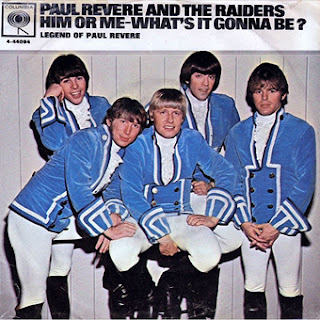I got the sad news late yesterday that jazz legend Dave Brubeck passed one day prior to his 92nd birthday. While he lived a long and productive life, he will be sorely missed. Brubeck pushed the envelope in jazz by forcing himself to write and record songs in unusual time signatures. It started with his 1959 LP “Time Out” and continued with 1961’s “Time Further Out,” 1962’s “Countdown — Time in Outer Space,” and culminated with 1963’s “Time Changes.”
The most popular of these is “Time Out,” which I had already featured along with its hit single of “Take Five.” Written by saxophonist Paul Desmond in 5/4 time, “Take Five” would have fit well for a Thursday Repeats and Threepeats category as it was released twice – first in 1959 and later in 1961 when it charted at #25.
Since I’ve already featured “Take Five,” I must move to something else and suspend our typical Thursday category for this tribute. Brubeck’s second most popular song, “Unsquare Dance,” was also released in 1961 and charted only at #74.
Written by Brubeck on his way to the studio and featuring the unwieldy 7/4 time signature, the Dave Brubeck Quartet recorded the song in one take. I don’t know about you, but I have great difficulty counting the 7 beats to the measure on this number and I am sure that the handclaps were difficult.
It seems to me that the claps are arranged as rest-clap-rest-clap-rest-clap-clap with the claps coming on the second, fourth, sixth, and seventh beats. I may be wrong, but that’s what I am hearing. Eugene Wright’s bass starts the measure on the first beat while the claps are taking a very brief rest.
Joe Morello’s drumming consists of very tasty rim shots that pan from right to left and then left to right. Paul Desmond is not playing sax on this number, so he must be contributing to the handclaps along with Brubeck when Morello is soloing and with Morello when Brubeck is soloing.
Since the song is in 7/4 time, it never can be squared; however, the song devolves at the end with the a lack of “hipness” overtaken by “squareness” elements of “Turkey in the Straw” and “Shave and a Haircut” courtesy of Mr. Brubeck’s piano.
As the song ends, laughter emanates from the Joe Morello. From what I am told, it was a spontaneous outburst related to just getting through the number unscathed. “Unsquare Dance” was featured on the album “Time Further Out” and was produced by Teo Macero who also produced “Time Out.”
I had an opportunity to see and meet Dave Brubeck in 1983 here in Beckley, West Virginia. The concert was at Park Junior High School and may have been sponsored by my employer which was then known as Beckley College. I can’t swear to that, but I do know they did bring some other jazz shows into the region in the early 1980s.
Dave Brubeck was as humble and generous an individual as he was talented. The world is a better place for having known this bespectacled icon of the ivories. Rest in Peace Dave Brubeck – you’ve earned it.






























